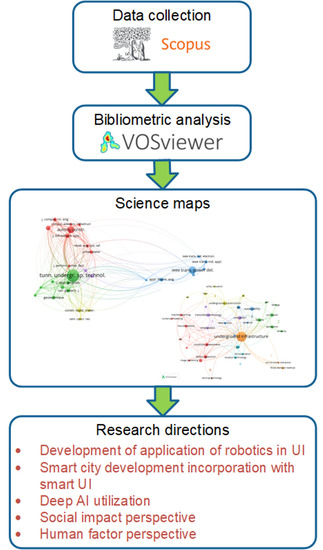Science Mapping for Recent Research Regarding Urban Underground Infrastructure
Abstract
1. Introduction
2. Methodology
2.1. Data Collection
2.2. Bibliometric Analysis
2.3. Discussion
3. Findings
3.1. Overview
3.2. Publication vs. Citation
3.3. Co-Citation Analysis
3.4. Co-Authorship Analysis
3.5. Co-Occurrence Analysis of Author Keywords
- Cluster 1 is in red, located at the left part of the figure. This cluster has a major focus on using advanced information technologies for condition assessment/inspection for UI. Information technology-related keywords such as machine learning, neural network, and image processing, are the most frequently co-occurring keywords. It also can be seen that closed-circuit television (CCTV) is a widely used technology for defect detection in this research area. Several representative publications related to this research cluster are [47,50,51,52,53,54,55].
- Cluster 2 is in green colour, located on the right side of Figure 9. This cluster covers the research area of UI failure and protection. Keywords such as corrosion and damage are included in this cluster. Global positioning system (GPS) technology has been adopted in this research area. Representative publications are [56,57,58,59,60].
- Cluster 3 is in blue colour, located on the right side of Figure 9. This cluster concentrates on the topics of asset management-related topics such as sustainability, resilience, and the deterioration problem of UI. In this cluster, Geographic Information System (GIS) is a frequently co-occurring keyword, which indicates that GIS has been well adopted in the asset management-related research for UI. Samples of publications in this area are [61,62,63,64]
- Cluster 4 is scattered at the top of Figure 9. The central theme of this cluster revolves around digital technologies for underground construction. Utility relocation management has been frequently investigated in this research cluster (example studies are [65,66,67]). Digital technologies such as the Internet of Things (IoT) [68], BIM [69,70], Augmented Reality (AR) [71,72] are frequently discussed topics in this cluster.
- Cluster 5 is located at the centre-left of Figure 9. This cluster focuses on the rehabilitation of UI, especially using trenchless technology. As a non-intrusive technique for underground pipe construction and maintenance, trenchless technology gain momentum in recent years. Samples of publications in this area are [73,74,75].
- Cluster 6 is located in the lower part of Figure 9, which has a central theme of locating and visualisation of UI. Among all the locating technologies, ground-penetrating radar (GPR) received the most attention. In addition to locating UI, better visualisation of the UI is also a frequently investigated topic, especially translating the UI information into 3D maps. Representative publications in the field of locating/visualisation of UI are [72,76,77,78,79,80].
- Cluster 7 is plotted in the lower-right corner of Figure 9, which is relatively the “loneliest” cluster compared with other clusters in the figure. This cluster mainly covers the research in the structure analysis domain indicated by the keywords of soil-structure interaction [81,82,83,84,85] and finite element method [86,87,88].
4. Discussion
- Development and application of robotics in UI. As the adoption of robotics is increasing in the construction industry, it opens up opportunities for developing new robots or customising existing robots for conducting tasks for UI construction and inspection, especially, for tasks that cannot be finished aboveground. In the meanwhile, integration of existing digital technology with robotics technology could further improve the construction and maintenance process of UI in different perspectives such as productivity, safety, consistency, etc.
- Smart city development incorporation with smart UI. UI could contribute to the development of smart cities significantly, yet research on synergies between smart cities and smart UI has not been frequently investigated in the UI research domain based on findings through the above bibliometric analysis. A connected and widely spread UI network could be used to collect real-time data that is valuable for smart city decision-making. Additionally, decisions made by the smart city “brain” could also be implemented by a well-designed UI network.
- Deep AI utilisation. With the development of AI, it is natural that UI-related research will also be benefited from that. There is already plenty of research focusing on applying AI in UI projects but most of them use the supervised learning method, which always requires a huge volume of labelled data as input to train a supervised deep learning model. Other techniques such as semi-supervised learning, unsupervised learning, and reinforcement learning have not been fully explored in the area of AI for UI research.
- Social impact perspective. UI is the basic component of modern cities, and their design, construction, upgrade, failure, demolition, etc. all have certain impacts on the local community or the whole city. For example, an updated plan of the sewer pipe system could be implemented following many available plans, but it is challenging to derive the optimum plan considering technical constraints and more importantly, the social impact constraints. More research efforts regarding the topic could be made in the future to improve the level of city management as well as citizen well-being.
- Human factor perspective. Physical and mental health is important for construction workers, which has drawn much attention from researchers in the area of improving the safety and well-being of construction workers. However, not many existing research studies focused on UI construction and maintenance workers. The special characteristics of UI systems being buried underground make the construction and maintenance operation activities different from that of other general infrastructures. Take CCTV video assessment of sewer pipes as an example, pipe technologists usually need to spend a lot of time reviewing sewer video footage, which is time-consuming and tedious but also a mental challenge since sometimes the sewer videos can be annoying with upsetting objects. Further research aiming at improving the safety and well-being of UI construction and maintenance workers is needed.
5. Conclusions
Author Contributions
Funding
Institutional Review Board Statement
Informed Consent Statement
Data Availability Statement
Conflicts of Interest
Appendix A
| Label | Links | Total Link Strength | Occurrences | Avg. Pub. Year | Avg. Citations | Avg. Norm. Citations |
|---|---|---|---|---|---|---|
| Underground Infrastructure | 30 | 116 | 124 | 2014.65 | 13.06 | 1.27 |
| Sustainability | 6 | 10 | 19 | 2013.58 | 29.21 | 1.51 |
| Simulation | 7 | 13 | 18 | 2015.83 | 14.61 | 1.12 |
| Underground Construction | 9 | 24 | 18 | 2013.50 | 13.28 | 1.33 |
| GPR | 9 | 15 | 17 | 2015.53 | 11.94 | 0.82 |
| Condition Assessment | 12 | 29 | 15 | 2015.13 | 30.60 | 2.41 |
| Defect Detection | 12 | 21 | 15 | 2014.73 | 16.73 | 1.52 |
| Failure | 9 | 21 | 15 | 2016.53 | 8.47 | 1.33 |
| GIS | 10 | 17 | 15 | 2014.87 | 20.73 | 1.22 |
| Trenchless Technology | 10 | 24 | 15 | 2010.67 | 16.87 | 1.21 |
| Corrosion | 6 | 12 | 14 | 2016.21 | 10.29 | 0.93 |
| Inspection | 7 | 15 | 14 | 2012.36 | 18.21 | 1.11 |
| Protection | 7 | 8 | 11 | 2012.09 | 9.00 | 0.57 |
| AR | 6 | 13 | 9 | 2017.22 | 22.11 | 0.97 |
| Location Technology | 5 | 10 | 9 | 2013.78 | 26.22 | 1.40 |
| Neural Network | 12 | 17 | 9 | 2017.33 | 16.44 | 1.76 |
| BIM | 9 | 14 | 8 | 2020.13 | 5.50 | 2.01 |
| Finite Element Method | 2 | 6 | 8 | 2015.13 | 14.00 | 1.77 |
| Horizontal Directional Drilling | 4 | 6 | 8 | 2014.00 | 13.63 | 1.31 |
| Rehabilitation | 7 | 15 | 8 | 2011.88 | 23.50 | 1.25 |
| Machine Learning | 9 | 16 | 7 | 2019.29 | 20.57 | 4.20 |
| 3D Visualization | 4 | 5 | 6 | 2018.17 | 4.33 | 0.63 |
| Ampacity | 2 | 3 | 6 | 2015.33 | 7.00 | 0.83 |
| Deterioration | 7 | 11 | 6 | 2015.67 | 10.00 | 1.08 |
| Asset Management | 8 | 12 | 5 | 2015.80 | 5.00 | 0.49 |
| Image Processing | 4 | 6 | 5 | 2014.00 | 20.00 | 1.32 |
| Partial Discharges | 3 | 4 | 5 | 2018.20 | 10.00 | 1.63 |
| Sensing Technology | 2 | 3 | 5 | 2014.00 | 9.20 | 0.95 |
| CCTV | 6 | 11 | 4 | 2018.50 | 33.50 | 5.75 |
| Damage | 4 | 4 | 4 | 2019.50 | 3.75 | 1.34 |
| GPS | 5 | 8 | 4 | 2017.25 | 2.75 | 0.57 |
| IOT | 2 | 2 | 4 | 2019.25 | 5.50 | 1.69 |
| Numerical Modelling | 2 | 2 | 4 | 2020.00 | 2.25 | 0.78 |
| Resilience | 6 | 7 | 4 | 2018.50 | 8.50 | 1.15 |
| Soil-structure Interaction | 3 | 7 | 4 | 2013.50 | 21.00 | 1.55 |
| Utility Relocation | 2 | 3 | 4 | 2017.75 | 5.00 | 0.41 |
References
- Cano-Hurtado, J.J.; Canto-Perello, J. Sustainable Development of Urban Underground Space for Utilities. Tunn. Undergr. Space Technol. 1999, 14, 335–340. [Google Scholar] [CrossRef]
- Curiel-Esparza, J.; Canto-Perello, J.; Calvo, M.A. Establishing Sustainable Strategies in Urban Underground Engineering. Sci. Eng. Ethics 2004, 10, 523–530. [Google Scholar] [CrossRef] [PubMed]
- Metje, N.; Atkins, P.R.; Brennan, M.J.; Chapman, D.N.; Lim, H.M.; Machell, J.; Muggleton, J.M.; Pennock, S.; Ratcliffe, J.; Redfern, M.; et al. Mapping the Underworld - State-of-the-Art Review. Tunn. Undergr. Space Technol. 2007, 22, 568–586. [Google Scholar] [CrossRef]
- Malek Mohammadi, M.; Najafi, M.; Kermanshachi, S.; Kaushal, V.; Serajiantehrani, R. Factors Influencing the Condition of Sewer Pipes: State-of-the-Art Review. J. Pipeline Syst. Eng. Pract. 2020, 11, 1–11. [Google Scholar] [CrossRef]
- Wang, M.; Yin, X. Construction and Maintenance of Urban Underground Infrastructure with Digital Technologies. Autom. Constr. 2022, 141, 104464. [Google Scholar] [CrossRef]
- Donthu, N.; Kumar, S.; Mukherjee, D.; Pandey, N.; Lim, W.M. How to Conduct a Bibliometric Analysis: An Overview and Guidelines. J. Bus. Res. 2021, 133, 285–296. [Google Scholar] [CrossRef]
- Zhang, F.; Zhang, H. Bibliometric Analysis of Research Trends on Acupuncture for Neck Pain Treatment over the Past 20 Years [Letter]. J. Pain Res. 2021, 14, 3553–3554. [Google Scholar] [CrossRef]
- Ana, E.V.; Bauwens, W. Modeling the Structural Deterioration of Urban Drainage Pipes: The State-of-the-Art in Statistical Methods. Urban Water J. 2010, 7, 47–59. [Google Scholar] [CrossRef]
- Hao, T.; Rogers, C.D.F.; Metje, N.; Chapman, D.N.; Muggleton, J.M.; Foo, K.Y.; Wang, P.; Pennock, S.R.; Atkins, P.R.; Swingler, S.G.; et al. Condition Assessment of the Buried Utility Service Infrastructure. Tunn. Undergr. Space Technol. 2012, 28, 331–344. [Google Scholar] [CrossRef]
- Liu, Z.; Kleiner, Y. State of the Art Review of Inspection Technologies for Condition Assessment of Water Pipes. Meas. J. Int. Meas. Confed. 2013, 46, 1–15. [Google Scholar] [CrossRef]
- Koch, C.; Georgieva, K.; Kasireddy, V.; Akinci, B.; Fieguth, P. A Review on Computer Vision Based Defect Detection and Condition Assessment of Concrete and Asphalt Civil Infrastructure. Adv. Eng. Inform. 2015, 29, 196–210. [Google Scholar] [CrossRef]
- Malek Mohammadi, M.; Najafi, M.; Kaushal, V.; Serajiantehrani, R.; Salehabadi, N.; Ashoori, T. Sewer Pipes Condition Prediction Models: A State-of-the-Art Review. Infrastructures 2019, 4, 64. [Google Scholar] [CrossRef]
- Haurum, J.B.; Moeslund, T.B. A Survey on Image-Based Automation of CCTV and SSET Sewer Inspections. Autom. Constr. 2020, 111, 103061. [Google Scholar] [CrossRef]
- Dawood, T.; Elwakil, E.; Novoa, H.M.; Delgado, J.F.G. Artificial Intelligence for the Modeling of Water Pipes Deterioration Mechanisms. Autom. Constr. 2020, 120, 103398. [Google Scholar] [CrossRef]
- Rayhana, R.; Jiao, Y.; Zaji, A.; Liu, Z. Automated Vision Systems for Condition Assessment of Sewer and Water Pipelines. IEEE Trans. Autom. Sci. Eng. 2021, 18, 1861–1878. [Google Scholar] [CrossRef]
- Jin, R.; Zou, P.X.W.; Piroozfar, P.; Wood, H.; Yang, Y.; Yan, L.; Han, Y. A Science Mapping Approach Based Review of Construction Safety Research. Saf. Sci. 2019, 113, 285–297. [Google Scholar] [CrossRef]
- Jin, R.; Yuan, H.; Chen, Q. Science Mapping Approach to Assisting the Review of Construction and Demolition Waste Management Research Published between 2009 and 2018. Resour. Conserv. Recycl. 2019, 140, 175–188. [Google Scholar] [CrossRef]
- Li, X.; Wu, P.; Shen, G.Q.; Wang, X.; Teng, Y. Mapping the Knowledge Domains of Building Information Modeling (BIM): A Bibliometric Approach. Autom. Constr. 2017, 84, 195–206. [Google Scholar] [CrossRef]
- Hosseini, M.R.; Martek, I.; Zavadskas, E.K.; Aibinu, A.A.; Arashpour, M.; Chileshe, N. Critical Evaluation of Off-Site Construction Research: A Scientometric Analysis. Autom. Constr. 2018, 87, 235–247. [Google Scholar] [CrossRef]
- Zhang, Y.; Liu, H.; Kang, S.C.; Al-Hussein, M. Virtual Reality Applications for the Built Environment: Research Trends and Opportunities. Autom. Constr. 2020, 118, 103311. [Google Scholar] [CrossRef]
- Mongeon, P.; Paul-Hus, A. The Journal Coverage of Web of Science and Scopus: A Comparative Analysis. Scientometrics 2016. [Google Scholar] [CrossRef]
- Moradi, S.; Zayed, T.; Golkhoo, F. Review on Computer Aided Sewer Pipeline Defect Detection and Condition Assessment. Infrastructures 2019, 4, 10. [Google Scholar] [CrossRef]
- Fenner, R.A. Approaches to Sewer Maintenance: A Review. Urban Water 2000, 2, 343–356. [Google Scholar] [CrossRef]
- Van Eck, N.J.; Waltman, L. Software Survey: VOSviewer, a Computer Program for Bibliometric Mapping. Scientometrics 2010, 84, 523–538. [Google Scholar] [CrossRef]
- Oraee, M.; Hosseini, M.R.; Papadonikolaki, E.; Palliyaguru, R.; Arashpour, M. Collaboration in BIM-Based Construction Networks: A Bibliometric-Qualitative Literature Review. Int. J. Proj. Manag. 2017, 35, 1288–1301. [Google Scholar] [CrossRef]
- Van Eck, N.J.; Waltman, L. VOSviewer Manual. Available online: https://www.vosviewer.com/download/f-33t2.pdf (accessed on 15 June 2021).
- Loke, M.H.; Chambers, J.E.; Rucker, D.F.; Kuras, O.; Wilkinson, P.B. Recent Developments in the Direct-Current Geoelectrical Imaging Method. J. Appl. Geophys. 2013, 95, 135–156. [Google Scholar] [CrossRef]
- Kumar, S.S.; Abraham, D.M.; Jahanshahi, M.R.; Iseley, T.; Starr, J. Automated Defect Classification in Sewer Closed Circuit Television Inspections Using Deep Convolutional Neural Networks. Autom. Constr. 2018, 91, 273–283. [Google Scholar] [CrossRef]
- Schall, G.; Mendez, E.; Kruijff, E.; Veas, E.; Junghanns, S.; Reitinger, B.; Schmalstieg, D. Handheld Augmented Reality for Underground Infrastructure Visualization. Pers. Ubiquitous Comput. 2009, 13, 281–291. [Google Scholar] [CrossRef]
- Al-Barqawi, H.; Zayed, T. Condition Rating Model for Underground Infrastructure Sustainable Water Mains. J. Perform. Constr. Facil. 2006, 20, 126–135. [Google Scholar] [CrossRef]
- Costello, S.B.; Chapman, D.N.; Rogers, C.D.F.; Metje, N. Underground Asset Location and Condition Assessment Technologies. Tunn. Undergr. Space Technol. 2007, 22, 524–542. [Google Scholar] [CrossRef]
- Tur, J.M.M.; Garthwaite, W. Robotic Devices for Water Main In-Pipe Inspection: A Survey. J. F. Robot. 2010, 27, 491–508. [Google Scholar]
- Hunt, D.V.L.; Nash, D.; Rogers, C.D.F. Sustainable Utility Placement via Multi-Utility Tunnels. Tunn. Undergr. Space Technol. 2014, 39, 15–26. [Google Scholar] [CrossRef]
- Abdel-Khalik, A.S.; Ahmed, S.; Elserougi, A.A.; Massoud, A.M. Effect of Stator Winding Connection of Five-Phase Induction Machines on Torque Ripples under Open Line Condition. IEEE/ASME Trans. Mechatron. 2014, 20, 580–593. [Google Scholar] [CrossRef]
- Sinha, S.K.; Fieguth, P.W. Segmentation of Buried Concrete Pipe Images. Autom. Constr. 2006, 15, 47–57. [Google Scholar] [CrossRef]
- Endreny, T.; Collins, V. Implications of Bioretention Basin Spatial Arrangements on Stormwater Recharge and Groundwater Mounding. Ecol. Eng. 2009, 35, 670–677. [Google Scholar] [CrossRef]
- Zhao, X. A Scientometric Review of Global BIM Research: Analysis and Visualization. Autom. Constr. 2017, 80, 37–47. [Google Scholar] [CrossRef]
- Martinez, P.; Al-Hussein, M.; Ahmad, R. A Scientometric Analysis and Critical Review of Computer Vision Applications for Construction. Autom. Constr. 2019, 107, 102947. [Google Scholar] [CrossRef]
- Small, H. Co-Citation in the Scientific Literature: A New Measure of the Relationship between Two Documents. J. Am. Soc. Inf. Sci. 1973, 24, 265–269. [Google Scholar] [CrossRef]
- Yin, X.; Liu, H.; Chen, Y.; Al-Hussein, M. Building Information Modelling for Off-Site Construction: Review and Future Directions. Autom. Constr. 2019, 101, 72–91. [Google Scholar] [CrossRef]
- Canto-Perello, J.; Curiel-Esparza, J. Human Factors Engineering in Utility Tunnel Design. Tunn. Undergr. Space Technol. 2001, 16, 211–215. [Google Scholar] [CrossRef]
- Canto-Perello, J.; Curiel-Esparza, J.; Calvo, V. Criticality and Threat Analysis on Utility Tunnels for Planning Security Policies of Utilities in Urban Underground Space. Expert Syst. Appl. 2013, 40, 4707–4714. [Google Scholar] [CrossRef]
- Canto-Perello, J.; Curiel-Esparza, J. Assessing Governance Issues of Urban Utility Tunnels. Tunn. Undergr. Space Technol. 2013, 33, 82–87. [Google Scholar] [CrossRef]
- Wang, T.; Tan, L.; Xie, S.; Ma, B. Development and Applications of Common Utility Tunnels in China. Tunn. Undergr. Space Technol. 2018, 76, 92–106. [Google Scholar] [CrossRef]
- De León, F.; Anders, G.J. Effects of Backfilling on Cable Ampacity Analyzed with the Finite Element Method. IEEE Trans. Power Deliv. 2008, 23, 537–543. [Google Scholar] [CrossRef]
- Bobylev, N. Mainstreaming Sustainable Development into a City’s Master Plan: A Case of Urban Underground Space Use. Land Use policy 2009, 26, 1128–1137. [Google Scholar] [CrossRef]
- Cheng, J.C.P.; Wang, M. Automated Detection of Sewer Pipe Defects in Closed-Circuit Television Images Using Deep Learning Techniques. Autom. Constr. 2018, 95, 155–171. [Google Scholar] [CrossRef]
- Olde Scholtenhuis, L.L.; Hartmann, T.; Dorée, A.G. 4D CAD Based Method for Supporting Coordination of Urban Subsurface Utility Projects. Autom. Constr. 2016, 62, 66–77. [Google Scholar] [CrossRef]
- He, Q.; Wang, G.; Luo, L.; Shi, Q.; Xie, J.; Meng, X. Mapping the Managerial Areas of Building Information Modeling (BIM) Using Scientometric Analysis. Int. J. Proj. Manag. 2017, 35, 670–685. [Google Scholar] [CrossRef]
- Kumar, S.S.; Wang, M.; Abraham, D.M.; Jahanshahi, M.R.; Iseley, T.; Cheng, J.C.P. Deep Learning–Based Automated Detection of Sewer Defects in CCTV Videos. J. Comput. Civ. Eng. 2020, 34, 04019047. [Google Scholar] [CrossRef]
- Yin, X.; Ma, T.; Bouferguene, A.; Al-Hussein, M. Automation for Sewer Pipe Assessment: CCTV Video Interpretation Algorithm and Sewer Pipe Video Assessment (SPVA) System Development. Autom. Constr. 2021, 125, 103622. [Google Scholar] [CrossRef]
- Wang, M.; Cheng, J.C.P. A Unified Convolutional Neural Network Integrated with Conditional Random Field for Pipe Defect Segmentation. Comput. Civ. Infrastruct. Eng. 2019, 35, 162–177. [Google Scholar] [CrossRef]
- Li, D.; Cong, A.; Guo, S. Sewer Damage Detection from Imbalanced CCTV Inspection Data Using Deep Convolutional Neural Networks with Hierarchical Classification. Autom. Constr. 2019, 101, 199–208. [Google Scholar] [CrossRef]
- Hawari, A.; Alamin, M.; Alkadour, F.; Elmasry, M.; Zayed, T. Automated Defect Detection Tool for Closed Circuit Television (Cctv) Inspected Sewer Pipelines. Autom. Constr. 2018, 89, 99–109. [Google Scholar] [CrossRef]
- Yin, X.; Chen, Y.; Bouferguene, A.; Zaman, H.; Al-Hussein, M.; Kurach, L. A Deep Learning-Based Framework for an Automated Defect Detection System for Sewer Pipes. Autom. Constr. 2020, 109. [Google Scholar] [CrossRef]
- Mazunga, F.; Romosi, T.; Guvhu, R. Manhole Intrusion Detection System with Notification Stages. Sci. Afr. 2021, 12, e00819. [Google Scholar] [CrossRef]
- Pompili, M.; Calcara, L.; D’Orazio, L.; Ricci, D.; Derviškadić, A.; He, H. Joints Defectiveness of MV Underground Cable and the Effects on the Distribution System. Electr. Power Syst. Res. 2021, 192, 107004. [Google Scholar] [CrossRef]
- Kuliczkowska, E.; Parka, A. The Structural Integrity of Corroded Concrete Sewers. Eng. Fail. Anal. 2019, 104, 409–421. [Google Scholar] [CrossRef]
- Yan, Y.; Huang, Q.; Xie, Y.; Liu, T.; Xu, Q.; Fan, F.; Wang, Y. Failure Analysis of Urban Open-Cut Utility Tunnel under Ground Fissures Environment in Xi’an, China. Eng. Fail. Anal. 2021, 127, 105529. [Google Scholar] [CrossRef]
- Li, S.H.; Li, C.; Yao, D.; Wang, C.X. Using GPS and InSAR Data to Assess the Cumulative Damage of an Underground Utility Tunnel. Arab. J. Geosci. 2020, 13, 62. [Google Scholar] [CrossRef]
- Kopsidas, K.; Liu, S. Power Network Reliability Framework for Integrating Cable Design and Ageing. IEEE Trans. Power Syst. 2018, 33, 1521–1532. [Google Scholar] [CrossRef]
- Zhang, X.; Li, Y.; Wu, D. Developing an Underground Utility Occupation Index for Efficient Urban Utilities Planning. J. Constr. Eng. Manag. 2020, 146, 04020036. [Google Scholar] [CrossRef]
- Wu, C.; Wu, P.; Jiang, R.; Wang, J.; Wang, X.; Wan, M. Evaluating the Economic and Social Benefits of Multiutility Tunnels with an Agent-Based Simulation Approach. Eng. Constr. Archit. Manag. 2020, 29, 1–25. [Google Scholar] [CrossRef]
- Yin, X.; Chen, Y.; Bouferguene, A.; Al-Hussein, M. Data-Driven Bi-Level Sewer Pipe Deterioration Model: Design and Analysis. Autom. Constr. 2020, 116, 103181. [Google Scholar] [CrossRef]
- Lee, M.; Rueda-Benavides, J.A.; Gransberg, D.D. Utility Management System Cost and Time Benefits and Implications from the Local Agency Perspective. J. Infrastruct. Syst. 2016, 22, 04015015. [Google Scholar] [CrossRef]
- Vilventhan, A.; Kalidindi, S.N. Utility Relocation Management in Highway Projects. Built Environ. Proj. Asset Manag. 2018, 8, 171–182. [Google Scholar] [CrossRef]
- Vilventhan, A.; Razin, S.; Rajadurai, R. 4D BIM Models for Smart Utility Relocation Management in Urban Infrastructure Projects. Facilities 2021, 39, 50–63. [Google Scholar] [CrossRef]
- Yamaguchi, Y.; Fujino, Y.; Katsuda, H.; Nakano, M.; Fukumoto, H.; Teruhi, S.; Akabane, K.; Yoshino, S. Underground Infrastructure Management System Using Internet of Things Wireless Transmission Technology. IEICE Trans. Electron. 2018, E101C, 727–733. [Google Scholar] [CrossRef]
- Yin, X.; Liu, H.; Chen, Y.; Wang, Y.; Al-Hussein, M. A BIM-Based Framework for Operation and Maintenance of Utility Tunnels. Tunn. Undergr. Sp. Technol. 2020, 97. [Google Scholar] [CrossRef]
- Chapman, D.; Providakis, S.; Rogers, C. BIM for the Underground–An Enabler of Trenchless Construction. Undergr. Sp. 2020, 5, 354–361. [Google Scholar] [CrossRef]
- Fenais, A.; Ariaratnam, S.T.; Smilovsky, N. Assessing the Accuracy of an Outdoor Augmented Reality Solution for Mapping Underground Utilities. J. Pipeline Syst. Eng. Pract. 2020, 11, 04020029. [Google Scholar] [CrossRef]
- Pereira, M.; Burns, D.; Orfeo, D.; Zhang, Y.; Jiao, L.; Huston, D.; Xia, T. 3-D Multistatic Ground Penetrating Radar Imaging for Augmented Reality Visualization. IEEE Trans. Geosci. Remote Sens. 2020, 58, 5666–5675. [Google Scholar] [CrossRef]
- Zaneldin, E.; Al Khatib, O.; Ahmed, W. Investigating the Use of No-Dig Technologies for Underground Utilities in Developing Countries. Innov. Infrastruct. Solut. 2020, 5, 17. [Google Scholar] [CrossRef]
- Chapman, D.N.; Rogers, C.D.F.; Burd, H.J.; Norris, P.M.; Milligan, G.W.E. Research Needs for New Construction Using Trenchless Technologies. Tunn. Undergr. Space Technol. 2007, 22, 491–502. [Google Scholar] [CrossRef]
- Kaushal, V.; Najafi, M. Comparative Assessment of Environmental Impacts from Open-Cut Pipeline Replacement and Trenchless Cured-in-Place Pipe Renewal Method for Sanitary Sewers. Infrastructures 2020, 5, 48. [Google Scholar] [CrossRef]
- Chou, C.; Li, H.; Song, D. Encoder-Camera-Ground Penetrating Radar Sensor Fusion: Bimodal Calibration and Subsurface Mapping. IEEE Trans. Robot. 2021, 37, 67–81. [Google Scholar] [CrossRef]
- Omwenga, M.M.; Wu, D.; Liang, Y.; Yang, L.; Huston, D.; Xia, T. Cognitive GPR for Subsurface Object Detection Based on Deep Reinforcement Learning. IEEE Internet Things J. 2021, 8, 11594–11606. [Google Scholar] [CrossRef]
- Xie, F.; Wu, C.G.W.; Lai, W.W.L.; Sham, J.F.C. Correction of Multi-Frequency GPR Wave Velocity with Distorted Hyperbolic Reflections from GPR Surveys of Underground Utilities. Tunn. Undergr. Space Technol. 2018, 76, 76–91. [Google Scholar] [CrossRef]
- Wei, L.; Khan, M.; Mehmood, O.; Dou, Q.; Bateman, C.; Magee, D.R.; Cohn, A.G. Web-Based Visualisation for Look-Ahead Ground Imaging in Tunnel Boring Machines. Autom. Constr. 2019, 105, 102830. [Google Scholar] [CrossRef]
- Olde Scholtenhuis, L.L.; den Duijn, X.; Zlatanova, S. Representing Geographical Uncertainties of Utility Location Data in 3D. Autom. Constr. 2018, 96, 483–493. [Google Scholar] [CrossRef]
- Zhang, W.; Shokrabadi, M.; Bozorgnia, Y.; Taciroglu, E. A Methodology for Fragility Analysis of Buried Water Pipes Considering Coupled Horizontal and Vertical Ground Motions. Comput. Geotech. 2020, 126, 103709. [Google Scholar] [CrossRef]
- Luzhen, J.; Jun, C.; Jie, L. Seismic Response of Underground Utility Tunnels: Shaking Table Testing and FEM Analysis. Earthq. Eng. Eng. Vib. 2010, 9, 555–567. [Google Scholar] [CrossRef]
- Bilotta, E. Soil-Structure Interaction in Tunnel Construction in Soft Ground. Riv. Ital. Geotec. 2017, 51, 5–30. [Google Scholar] [CrossRef]
- Spasojevic, A.D.; Mair, R.J.; Gumbel, J.E. Centrifuge Modelling of the Effects of Soil Loading on Flexible Sewer Liners. Geotechnique 2007, 57, 331–341. [Google Scholar] [CrossRef]
- Bustamante, S.; Mínguez, R.; Arroyo, A.; Manana, M.; Laso, A.; Castro, P.; Martinez, R. Thermal Behaviour of Medium-Voltage Underground Cables under High-Load Operating Conditions. Appl. Therm. Eng. 2019, 156, 444–452. [Google Scholar] [CrossRef]
- Benato, R.; Sessa, S.D.; Forzan, M.; Poli, M.; Sanniti, F.; Torchio, R. HVAC Single Core Insulated Cables with Steel Reinforced Mechanical Protections: Effect on Sequence Impedances. IEEE Trans. Power Deliv. 2021, 36, 1663–1671. [Google Scholar] [CrossRef]
- Zamanian, S.; Hur, J.; Shafieezadeh, A. Significant Variables for Leakage and Collapse of Buried Concrete Sewer Pipes: A Global Sensitivity Analysis via Bayesian Additive Regression Trees and Sobol’ Indices. Struct. Infrastruct. Eng. 2021, 17, 676–688. [Google Scholar] [CrossRef]
- Ocłoń, P.; Rerak, M.; Rao, R.V.; Cisek, P.; Vallati, A.; Jakubek, D.; Rozegnał, B. Multiobjective Optimization of Underground Power Cable Systems. Energy 2021, 215, 119089. [Google Scholar] [CrossRef]
- Jiang, B.; Stuart, P.; Raymond, M.; Villa, D.; Mamishev, A.V. Robotic Platform for Monitoring Underground Cable Systems. In Proceedings of the IEEE Power Engineering Society Transmission and Distribution Conference, Yokohama, Japan, 6–10 October 2002; Volume 2, pp. 1105–1109. [Google Scholar]
- Sun, X.; Lee, W.K.; Hou, Y.; Pong, P.W.T. Underground Power Cable Detection and Inspection Technology Based on Magnetic Field Sensing at Ground Surface Level. IEEE Trans. Magn. 2014, 50, 6200605. [Google Scholar] [CrossRef]
- Raza, U.; Salam, A. Wireless Underground Communications in Sewer and Stormwater Overflow Monitoring: Radio Waves through Soil and Asphalt Medium. Information 2020, 11, 98. [Google Scholar] [CrossRef]
- Kyvik, S.; Aksnes, D.W. Explaining the Increase in Publication Productivity among Academic Staff: A Generational Perspective. Stud. High. Educ. 2015, 40, 1438–1453. [Google Scholar] [CrossRef]
- McGrail, M.R.; Rickard, C.M.; Jones, R. Publish or Perish: A Systematic Review of Interventions to Increase Academic Publication Rates. High. Educ. Res. Dev. 2006, 25, 19–35. [Google Scholar] [CrossRef]
- Gouda, O.E.; Osman, G.F.A. On-Line Monitoring Device for Dry Zone Formation in the Soil Surrounding Underground Power Cables. IET Gener. Transm. Distrib. 2020, 14, 1483–1490. [Google Scholar] [CrossRef]
- Marzouk, M.; Abdallah, M.; El-Said, M. Modeling Microtunneling Projects Using Computer Simulation. J. Constr. Eng. Manag. 2010, 136, 670–682. [Google Scholar] [CrossRef]
- Mohamed, A.Z.E.D.; Zaini, H.G.; Gouda, O.E.; Ghoneim, S.S.M. Mitigation of Magnetic Flux Density of Underground Power Cable and Its Conductor Temperature Based on FEM. IEEE Access 2021, 9, 146592–146602. [Google Scholar] [CrossRef]
- Tarek, H.; Marzouk, M. Integrated Augmented Reality and Cloud Computing Approach for Infrastructure Utilities Maintenance. J. Pipeline Syst. Eng. Pract. 2022, 13. [Google Scholar] [CrossRef]
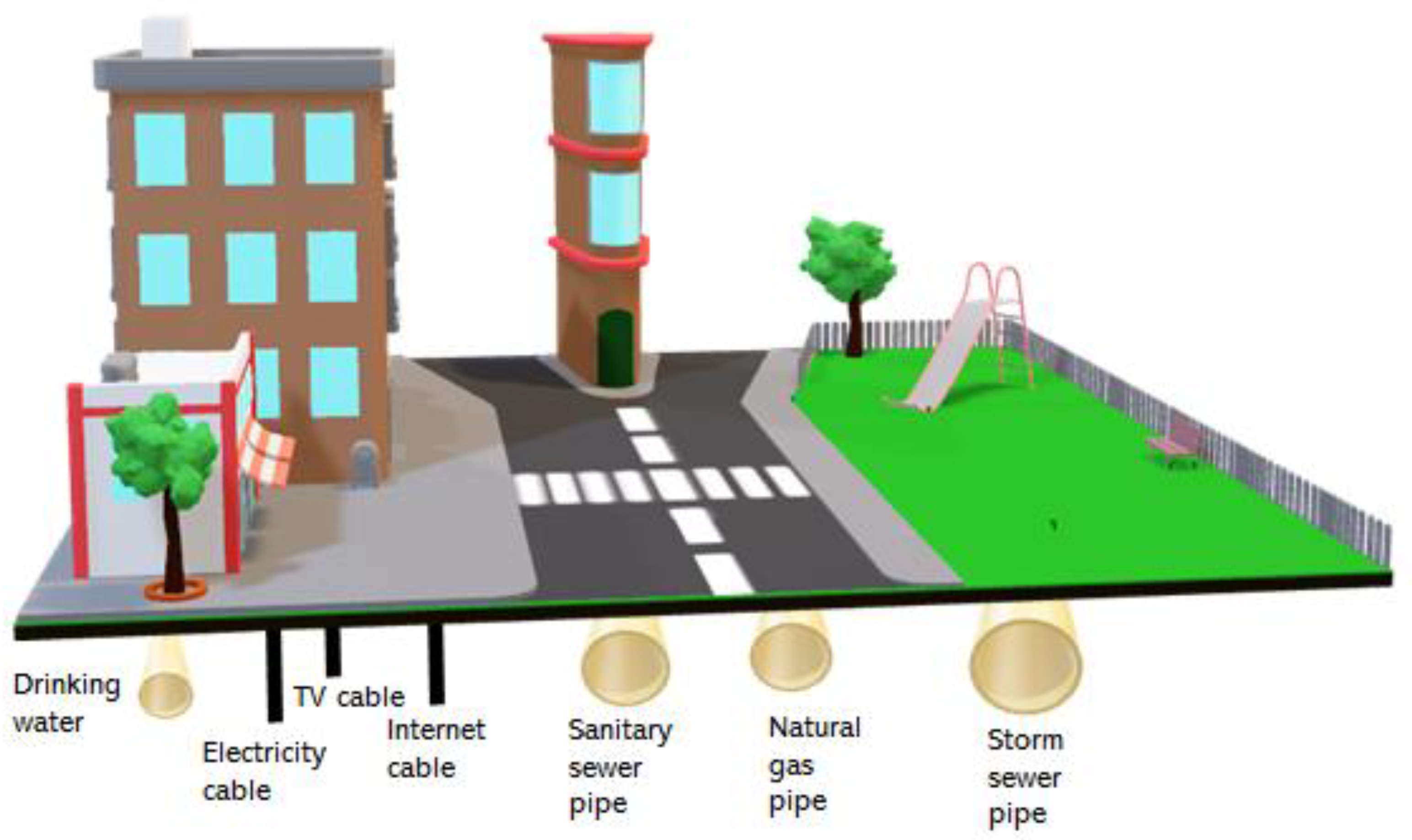

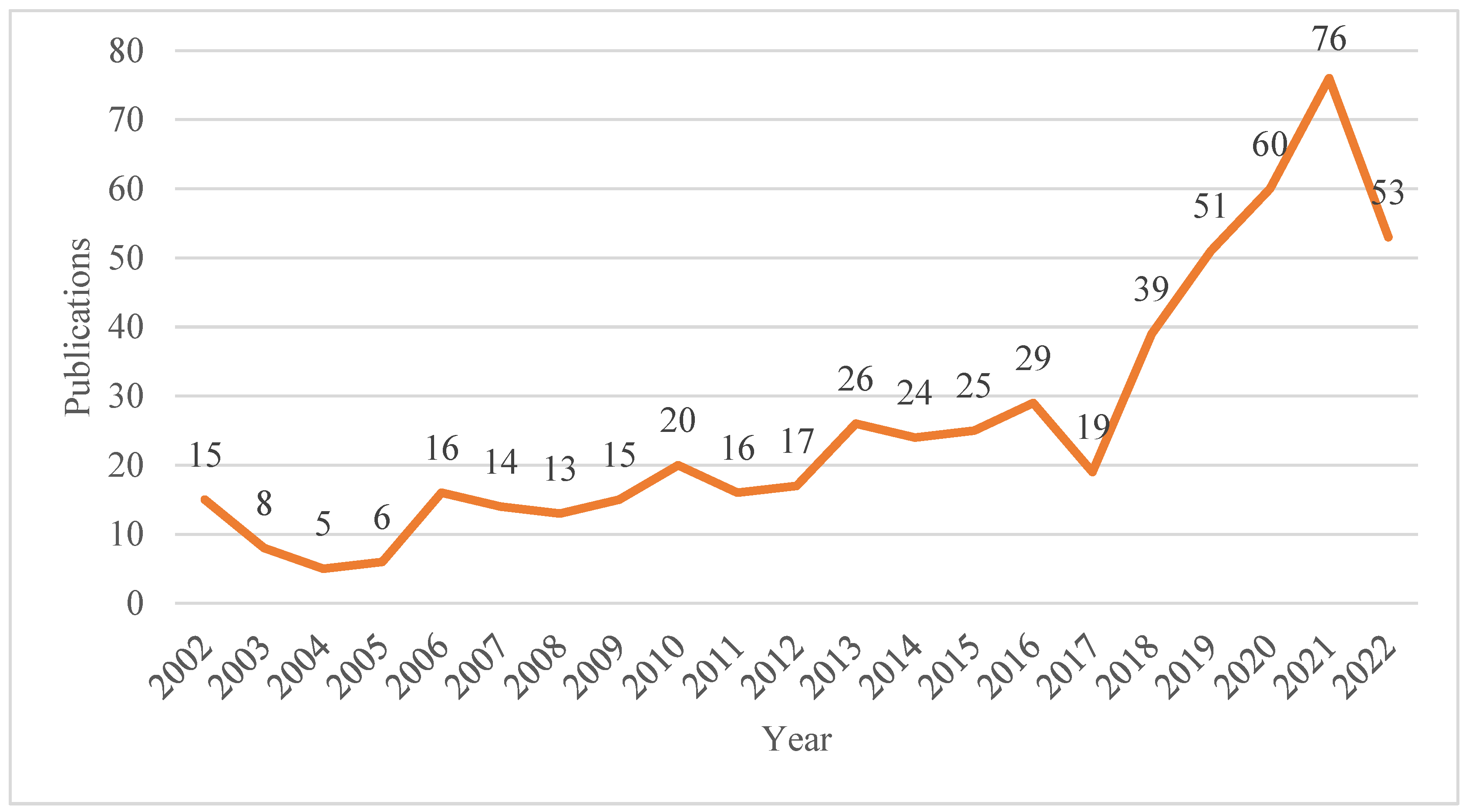
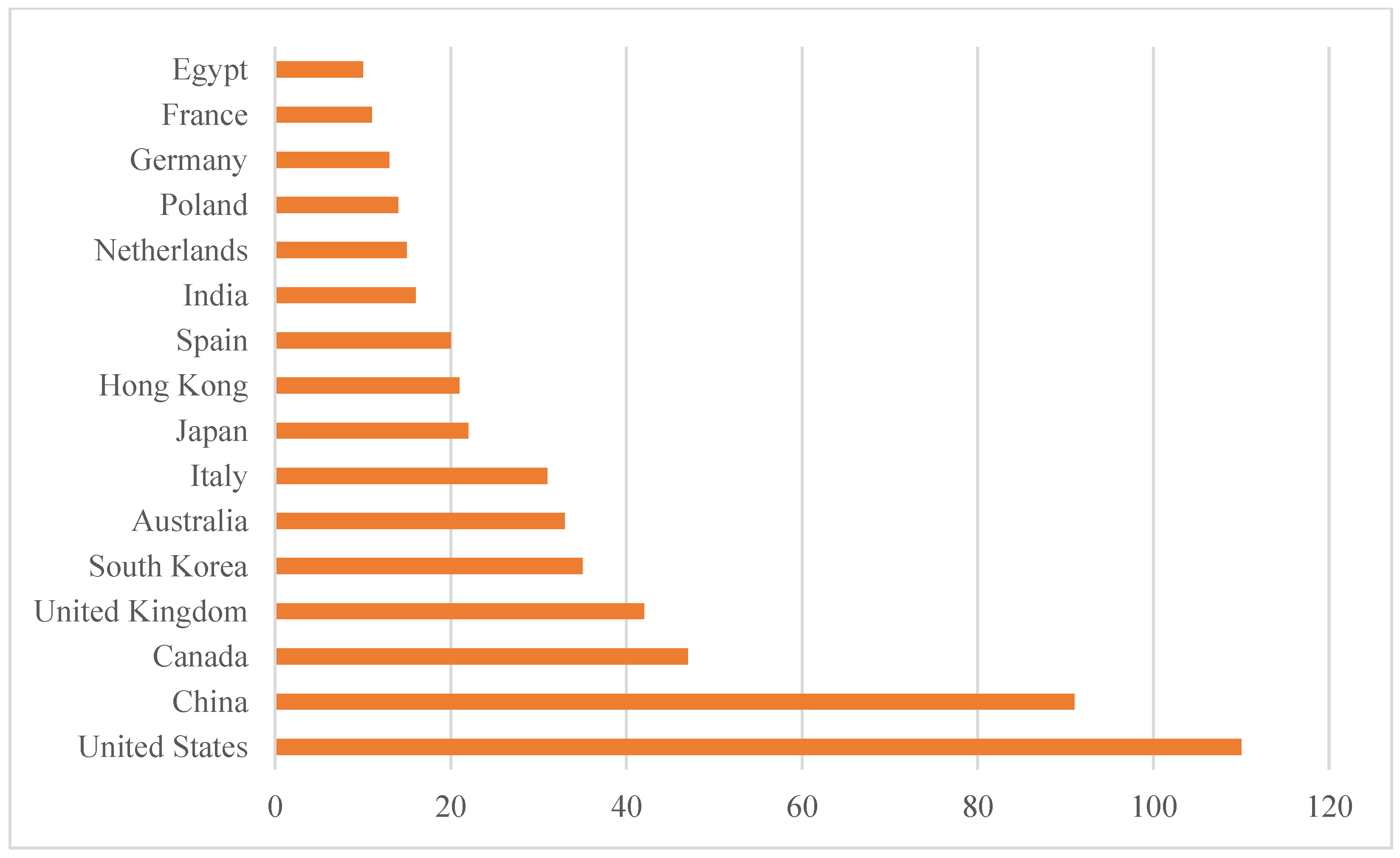

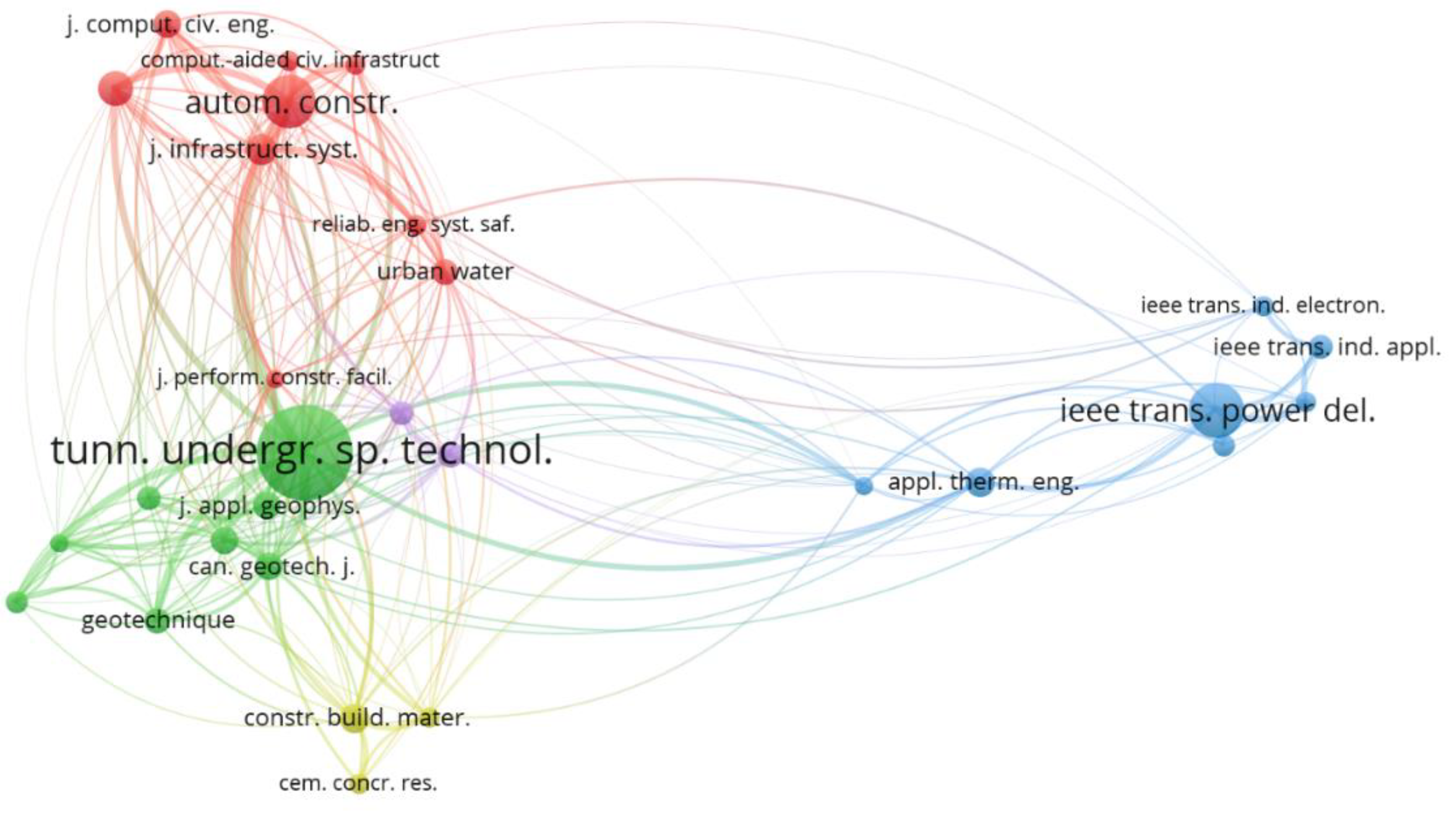

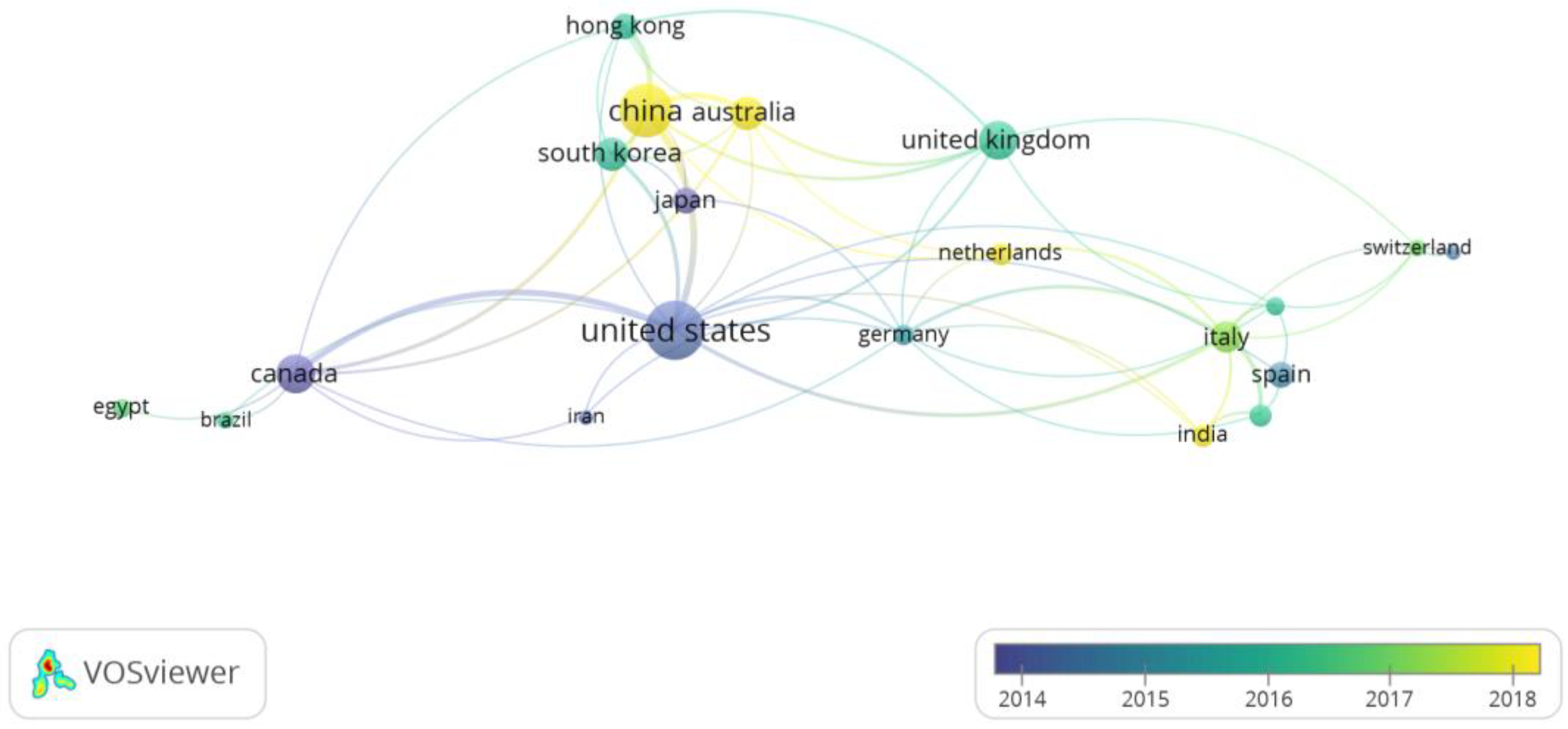
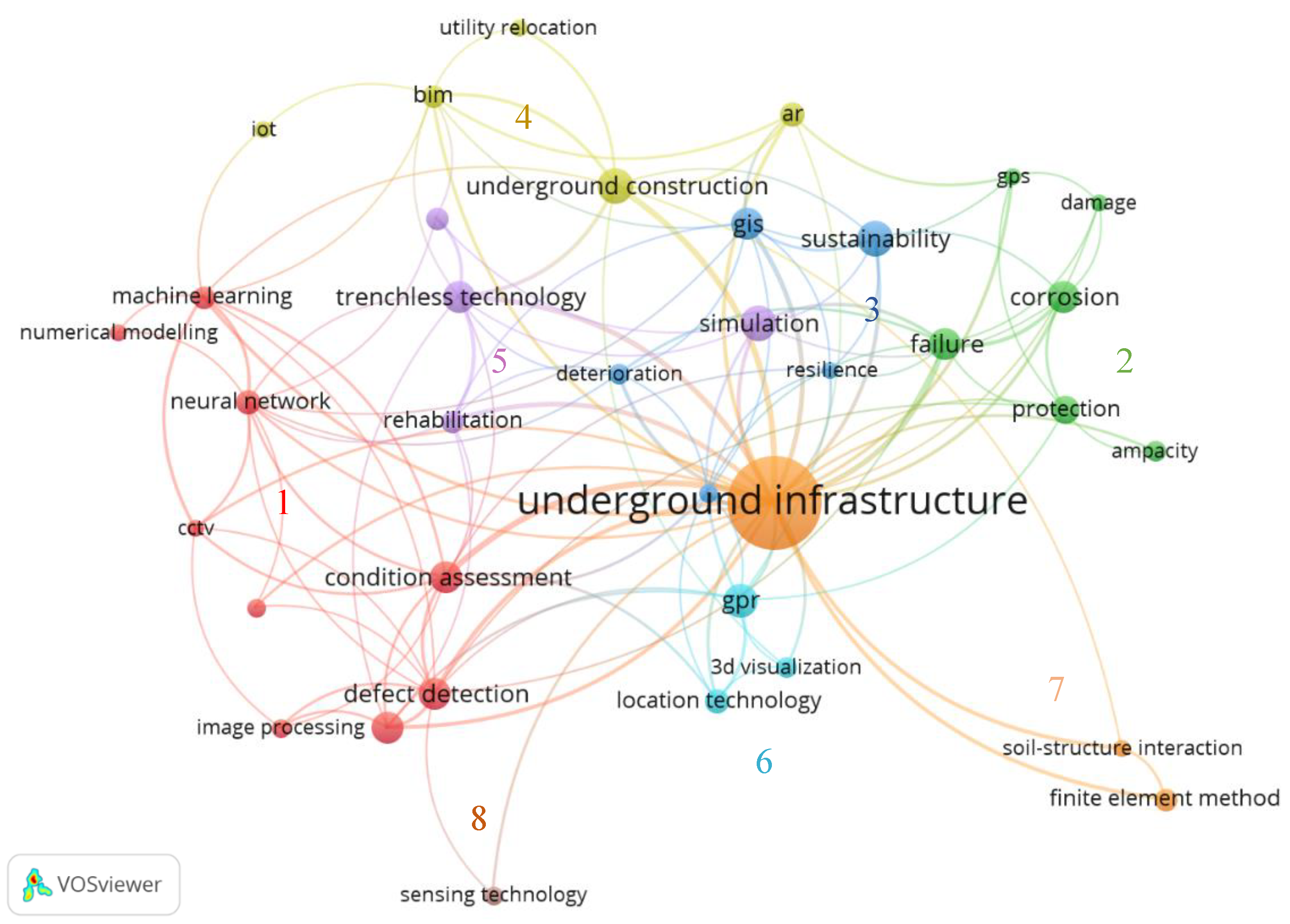
| Reference | Title | Source | Publication Year | Review Topic |
|---|---|---|---|---|
| [3] | Mapping the underworld—state-of-the-art review | Tunnelling and Underground Space Technology | 2007 | Locating technologies for UI |
| [8] | Modeling the structural deterioration of urban drainage pipes: The state-of-the-art in statistical methods | Urban Water Journal | 2010 | Deterioration modeling for UI |
| [9] | Condition assessment of the buried utility service infrastructure | Tunnelling and Underground Space Technology | 2012 | Inspection and assessment for UI |
| [10] | State-of-the-art review of inspection technologies for condition assessment of water pipes | Measurement | 2013 | Inspection technologies for UI |
| [11] | A review on computer vision-based defect detection and condition assessment of concrete and asphalt civil infrastructure | Advanced Engineering Informatics | 2015 | Computer vision technologies |
| [12] | Sewer pipes condition prediction models: a state-of-the-art review | Infrastructures | 2019 | condition prediction for sewer pipes |
| [4] | Factors influencing the condition of sewer pipes: state-of-the-art review | Journal of Pipeline Systems Engineering and Practice | 2020 | Deterioration modelling for UI |
| [13] | A survey on image-based automation of CCTV and SSET sewer inspections | Automation in Construction | 2020 | Vision-based method for UI condition assessment |
| [14] | Artificial intelligence for the modelling of water pipes deterioration mechanisms | Automation in Construction | 2020 | AI for deterioration modelling for UI |
| [15] | Automated vision systems for condition assessment of sewer and water pipelines | IEEE Transactions on Automation Science and Engineering | 2021 | Vision-based method for sewer and water pipeline |
| [5] | Construction and maintenance of urban underground infrastructure with digital technologies | Automation in Construction | 2022 | Digital technologies for UI construction and maintenance |
| Reference | Title | Publication Year | Source | Citations |
|---|---|---|---|---|
| [27] | Recent developments in the direct-current geoelectrical imaging method | 2013 | Journal of Applied Geophysics | 575 |
| [29] | Handheld Augmented Reality for underground infrastructure visualisation | 2009 | Personal and Ubiquitous Computing | 156 |
| [30] | Condition rating model for underground infrastructure sustainable water mains | 2006 | Journal of Performance of Constructed Facilities | 118 |
| [28] | Automated defect classification in sewer closed circuit television inspections using deep convolutional neural networks | 2018 | Automation in Construction | 115 |
| [31] | Underground asset location and condition assessment technologies | 2007 | Tunnelling and Underground Space Technology | 113 |
| [32] | Robotic devices for water main in-pipe inspection: A survey | 2010 | Journal of Field Robotics | 95 |
| [33] | Sustainable utility placement via Multi-Utility Tunnels | 2014 | Tunnelling and Underground Space Technology | 94 |
| [34] | Effect of stator winding connection on performance of five-phase induction machines | 2014 | IEEE Transactions on Industrial Electronics | 94 |
| [35] | Segmentation of buried concrete pipe images | 2006 | Automation in Construction | 88 |
| [36] | Implications of bioretention basin spatial arrangements on stormwater recharge and groundwater mounding | 2009 | Ecological Engineering | 86 |
| Reference | Title | Publication Year | Source Title | Co-Citations |
|---|---|---|---|---|
| [44] | Development and applications of common utility tunnels in China | 2018 | Tunnelling and Underground Space Technology | 11 |
| [1] | Sustainable development of urban underground space for utilities | 1999 | Tunnelling and Underground Space Technology | 10 |
| [45] | Effects of backfilling on cable ampacity analysed with the finite element method | 2008 | IEEE Transactions on Power Delivery | 9 |
| [46] | Mainstreaming sustainable development into a city’s master plan: a case of urban underground space use | 2009 | Land Use Policy | 8 |
| [28] | Automated defect classification in sewer closed circuit television inspections using deep convolutional neural networks | 2018 | Automation in Construction | 8 |
| [42] | Criticality and threat analysis on utility tunnels for planning security policies of utilities in urban underground space | 2013 | Expert Systems with Applications | 7 |
| [43] | Assessing governance issues of urban utility tunnels | 2013 | Tunnelling and Underground Space Technology | 6 |
| [41] | Human factors engineering in utility tunnel design | 2001 | Tunnelling and Underground Space Technology | 6 |
| [47] | Automated detection of sewer pipe defects in closed-circuit television images using deep learning techniques | 2018 | Automation in Construction | 6 |
| [2] | Establishing sustainable strategies in urban underground engineering | 2004 | Science and Engineering Ethics | 6 |
| [48] | 4D-CAD-based method for supporting coordination of urban subsurface utility projects | 2016 | Automation in Construction | 6 |
Publisher’s Note: MDPI stays neutral with regard to jurisdictional claims in published maps and institutional affiliations. |
© 2022 by the authors. Licensee MDPI, Basel, Switzerland. This article is an open access article distributed under the terms and conditions of the Creative Commons Attribution (CC BY) license (https://creativecommons.org/licenses/by/4.0/).
Share and Cite
Yin, X.; Wang, M. Science Mapping for Recent Research Regarding Urban Underground Infrastructure. Buildings 2022, 12, 2031. https://doi.org/10.3390/buildings12112031
Yin X, Wang M. Science Mapping for Recent Research Regarding Urban Underground Infrastructure. Buildings. 2022; 12(11):2031. https://doi.org/10.3390/buildings12112031
Chicago/Turabian StyleYin, Xianfei, and Mingzhu Wang. 2022. "Science Mapping for Recent Research Regarding Urban Underground Infrastructure" Buildings 12, no. 11: 2031. https://doi.org/10.3390/buildings12112031
APA StyleYin, X., & Wang, M. (2022). Science Mapping for Recent Research Regarding Urban Underground Infrastructure. Buildings, 12(11), 2031. https://doi.org/10.3390/buildings12112031






